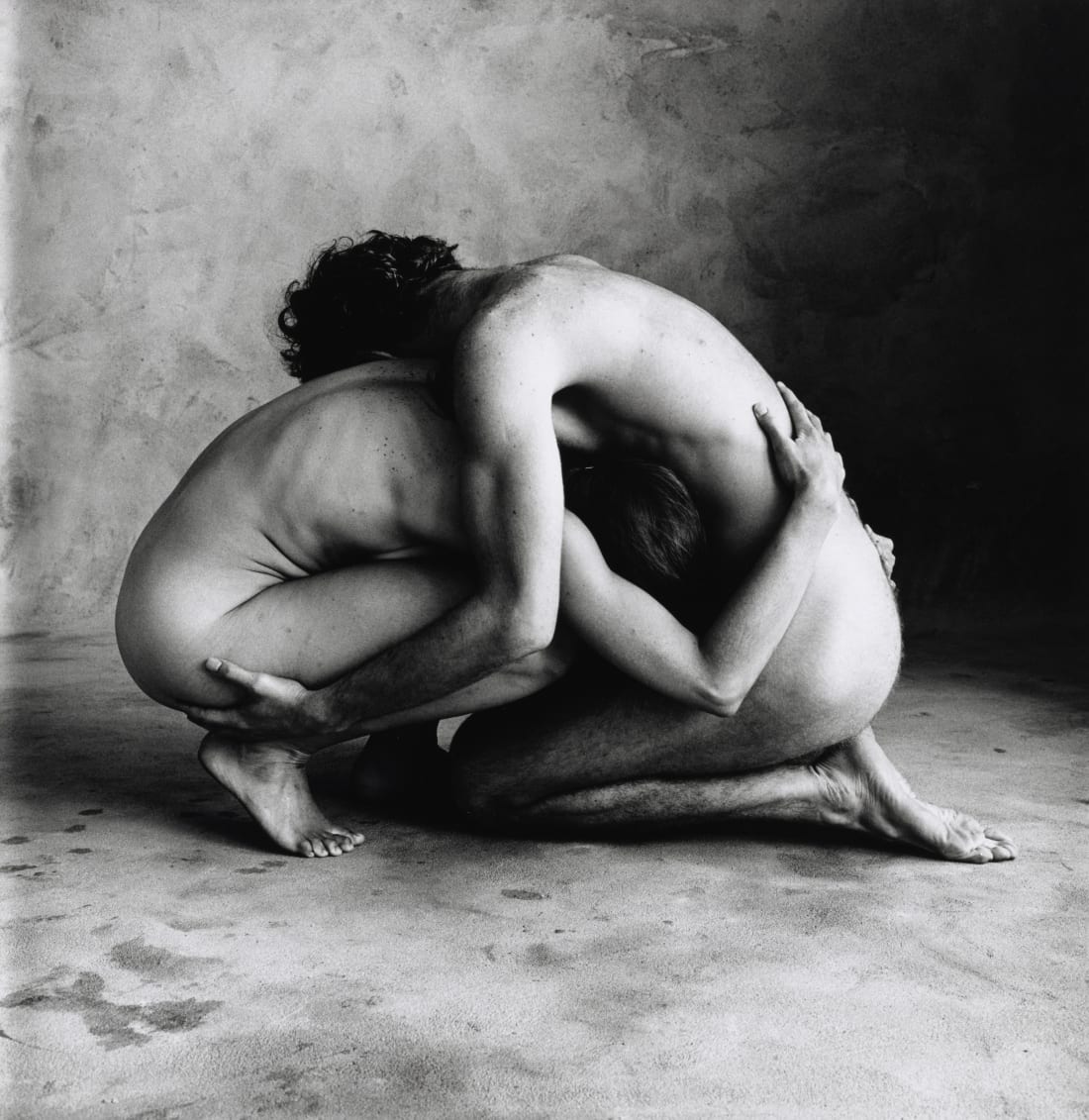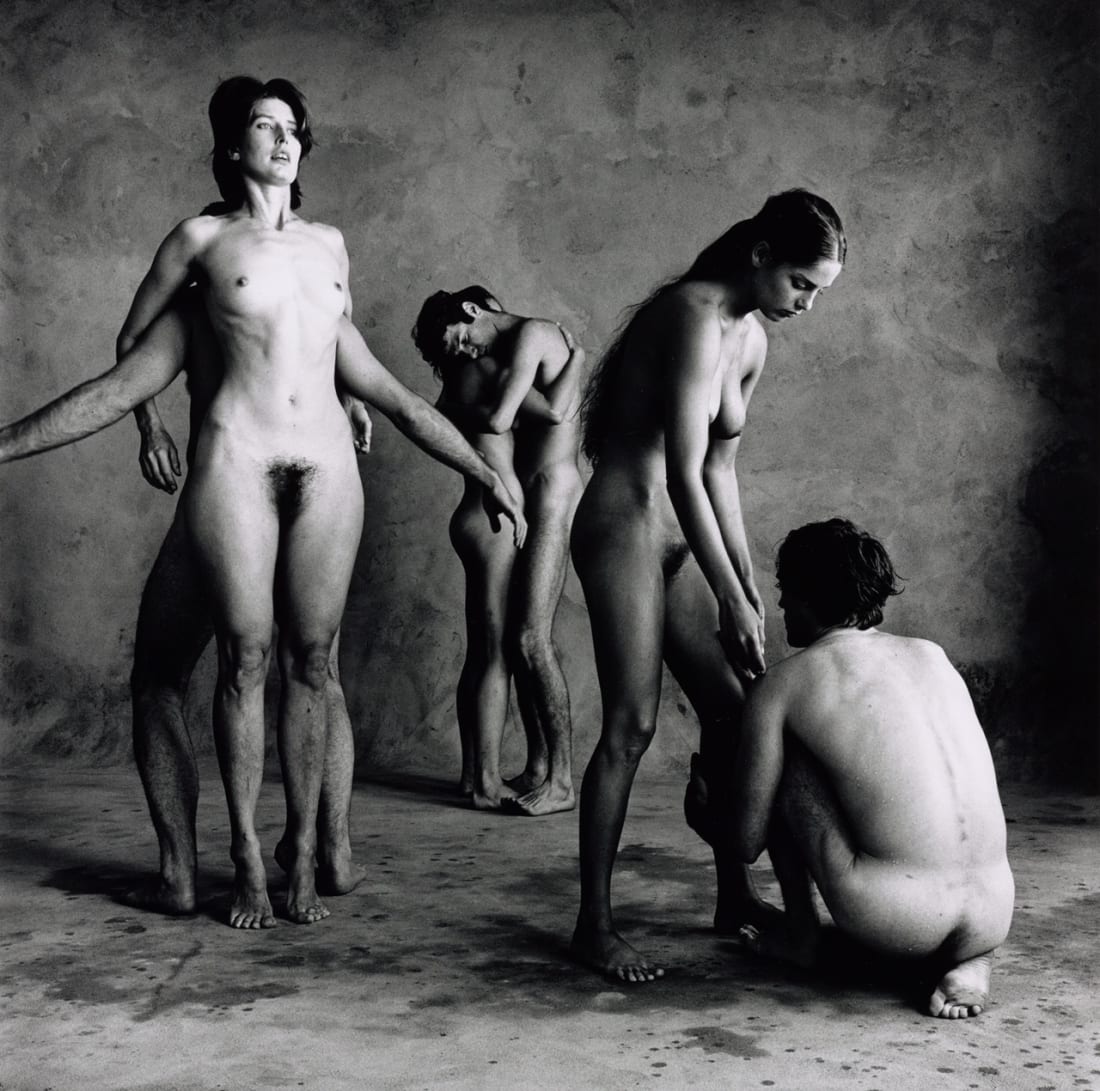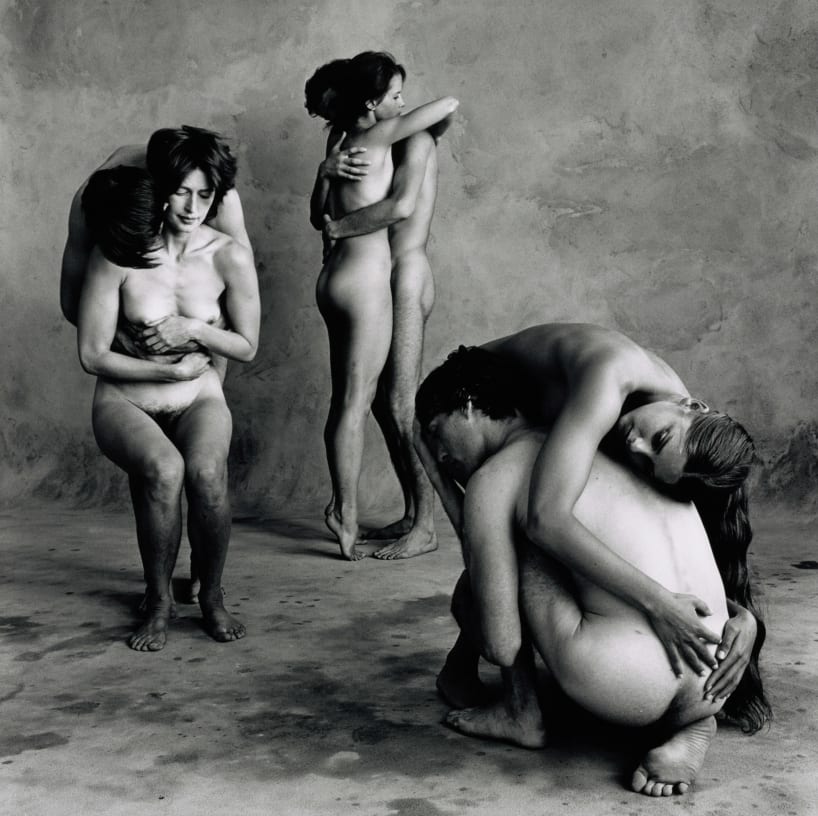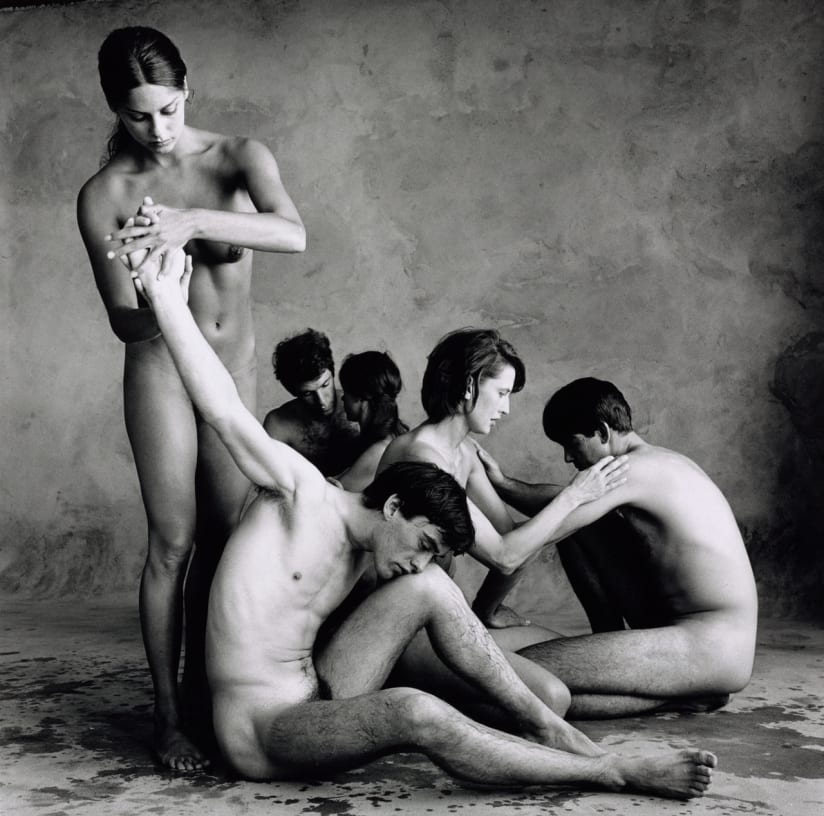Overview
What I remember is the purity of the relationship of these young people and an innocence so different from today’s. As I look at these pictures, how the dancers touch each other, how they embrace [...] there’s a serenity that as a photographer I’m not used to. — Irving Penn, 1995
This exhibition will be dedicated to a rarely seen series of photographs by Irving Penn capturing the groundbreaking work of the American choreographer Anna Halprin. Taken in 1967, the carefully composed images are the result of Penn’s collaboration with the Dancers’ Workshop of San Francisco, which he photographed performing Halprin’s improvisational choreography The Bath. The group of fourteen photographs, which were printed for the first time in 1995, highlights Halprin’s pioneering approach to movement and reveals a more experimental side to Penn’s practice. Since the exhibition at the Maison Européenne de la Photographie in 1997, curated by Jean-Luc Monterosso and Pascal Hoël, they have not been shown together in Paris.
The summer of 1967 in San Francisco has become known as the ‘Summer of Love’. Young people converged on the city, drawn to its burgeoning counterculture that broke the taboos of American society, promoting community, altruism, mysticism and free love. Fascinated by the movement, Irving Penn travelled to the Bay Area the following September to document its participants with a series of group portraits to be published in Look magazine. He wanted, as he termed it, to ‘look into the faces of these new San Francisco people through a camera in a daylight studio, against a simple background, away from their own daily circumstances.’
At the heart of the avant-garde art scene in the 1960s was the Dancers’ Workshop of San Francisco. Their founder and choreographer, Anna Halprin, was a pioneer of postmodern dance. Her practice promoted healing and a sense of community through body awareness and improvised group interactions based on ritual which radically changed modern dance. ‘Dance is breath made visible’, Halprin said of her approach. Her daring performances were often participatory and rarely took place in traditional stage settings, with one instance leading to a summons for indecent exposure only a few short months before Irving Penn photographed the troupe.
In the original performances of The Bath, the nude dancers bathed each other in fountains or using jugs and buckets of water. ‘The performance of the simple action,’ writes Halprin in her notes on The Bath, ‘the natural action, objectifies what is really going on inside the performer’s self.’ Penn omits the containers in his photographs, although fine droplets of water appear here and there on the dancers’ skin, and wet patches remain on the studio floor. When Halprin saw the pictures, she observed that Penn’s compositions put forward ‘the absolute purity of a boy and girl relating to each other in the most magical way, and yet it seemed real. What [the dancers] were left with was creating the essence of the bath, but it had nothing to do with actual bathing anymore.’
Although the majority of the dancers remain unnamed, Halprin’s daughter Daria Halprin can be identified throughout the photographs, her powerful gaze highlighted by Penn in one of the series’ most arresting images. Coming in laterally from the window on the north side of the studio, the daylight wraps itself around the dancers’ bodies as they interlace. ‘The pictures are primarily of embraces’, Penn remarked upon rediscovering the photographs in 1995, ‘beautiful and touching. Here they are without clothes, there’s love, the gestures are tenderly erotic but certainly not pornographic.’
And yet the photographs were considered too daring to be published in ‘The Incredibles’ essay featured in the 9 January 1968 issue of Look magazine. According to Vasilios Zatse, deputy director of The Irving Penn Foundation, they remained forgotten for almost three decades until Halprin contacted Penn in 1995 enquiring about the photographs for her archive. He selected 14 negatives and printed them for her, using the gelatin silver process. Although the two never met, Penn stated at the time: ‘I didn’t know Ann[a] Halprin at all, but I know from these pictures, I tell you, I like her very much.’
Dance was a recurring theme throughout Penn’s career. From his photographs of the American ballet companies in 1946, to his 1999 series capturing the movements of dancer and choreographer Alexandra Beller, the artist maintained an interest in new and avant-garde forms of performance. It is undoubtedly thanks to his affinity for the art form that Penn was able to capture The Bath with such acuteness. Where Halprin found that the photographs brought out the essence of her own work, Penn remarked that they gave him a sense of ‘serenity’, which he was, in his words, ‘not used to.’ The series, therefore represents a unique confluence between modern photography and postmodern dance and constitutes a rare document of the meeting of two artistic minds.


























































































































































































